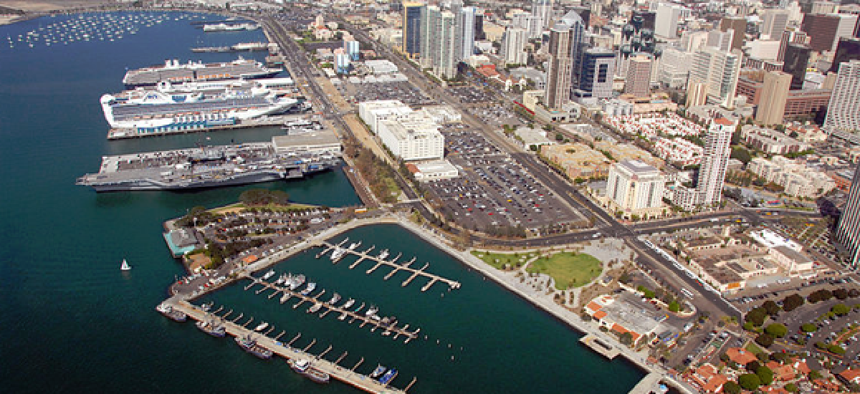Algorithm mimics evolution to aid disaster recovery

Researchers have created an algorithm that quickly weighs the available information about transportation infrastructure, the damage sustained and repair resources and presents the best recovery strategies.
In the wake of a disaster, it can be difficult even for trained professionals to decide what to tackle first. Clear the roads and repair bridges so people can reach hospitals and food and water can be trucked in? Repair the electric grid so that hospitals can function? Restore communications?
The answer, said Paolo Bocchini, assistant professor of civil and environmental engineering at Lehigh University, is sometimes counterintuitive.
“Sometimes the short-term and long-term goals are conflicting,” Bocchini said. Repairing a bridge providing more direct access to a hospital may, under certain conditions, slow down the recovery of other parts of a community, including facilities important for public safety. “What we actually found in our simulations was a set of trade-offs,” he said.
Bocchini, his collaborator Aman Karamlou and their team of researchers developed a tool, dubbed AMIGO, to help in making such decisions. AMIGO -- or Algorithm with Multiple-Input Genetic Operators – quickly weighs all the available information about infrastructure, the damage sustained and the repair resources available, then presents several optimal recovery strategies to a decision maker who can choose from the best alternatives.
By weighing only the options that fit within the parameters of a city's recovery goals, the “genetic algorithms mimic the process of biological evolution to find the optimal solutions of a problem,” Bocchini explained.
To test the effectiveness of AMIGO, Bocchini’s team analyzed a hypothetical earthquake in the San Diego region using information from the National Bridge Inventory, a database maintained by the Federal Highway Administration. The researchers identified the 80 bridges in the area that would have been the most damaged -- based on NBI data including bridge type, length and width and age -- and applied AMIGO to determine the best restoration strategy.
While AMIGO does the hard work of weighing the thousands of factors involved, it is, of course, up to humans to determine the priority goals of recovery. “In the case of the Port of San Diego, Bocchini said, “our short-term priority was to connect the harbor itself to the three main gateways -- highways in and out of the port. The long-term goal is basically to bring back the city to full functionality.”
AMIGO is actually part of a larger project, funded primarily by the National Science Foundation. PRAISys, the Probabilistic Resilience Assessment of Interdependent Systems, is joint effort of researchers at Lehigh University, the Florida Atlantic University and Georgia State University, aimed at modeling the interdependencies of critical infrastructure systems and their recover after disasters.
While AMIGO was first used to analyze transportation networks, Bocchini said, “we are working also on communication, power distribution and so forth. What we are doing for the larger project is basically developing modules that can perform these types of analyses with different levels of input data.”
According to Bocchini, the ability to work with different levels of input is critical because the data available on much of the critical infrastructure is so uneven. “There are actually laws that prevent the utility companies from disclosing their data,” Bocchini said, adding that the situation is similar with communications companies.
“When we do these regional analyses, we have to deal with different data sources that in some cases are very rich and in other cases are very poor,” he said. Bocchini’s team is developing modules that will work with whatever data is available. “If we have rich data we'll try to use all of it and have very accurate results for those components. But if very poor data is available, we will do the best we can with whatever is available,” he said. “One of the biggest challenges of this is dis-homogeneity in data sources.”
The PRAISys project is among the first projects supported by the National Science Foundation’s new Critical Resilient Interdependent Infrastructure Systems and Processes, or CRISP, program.
Editor's note: This blog was changed Jan. 19 to correct the funding source of PRAISys. Also updated Feb. 10 to include Aman Karamlou, a collaborator in the project.
NEXT STORY: The changing body-cam conversations





